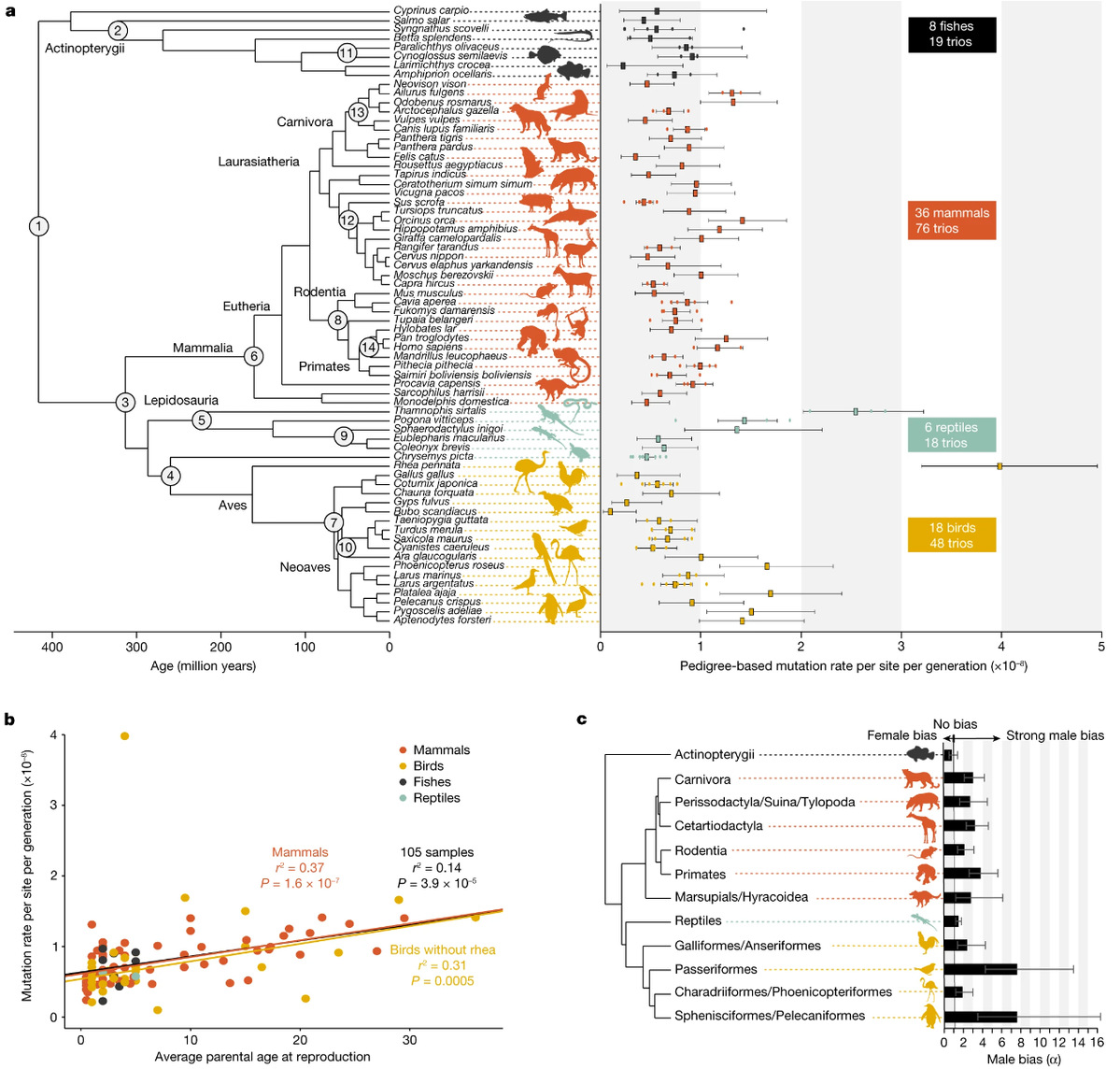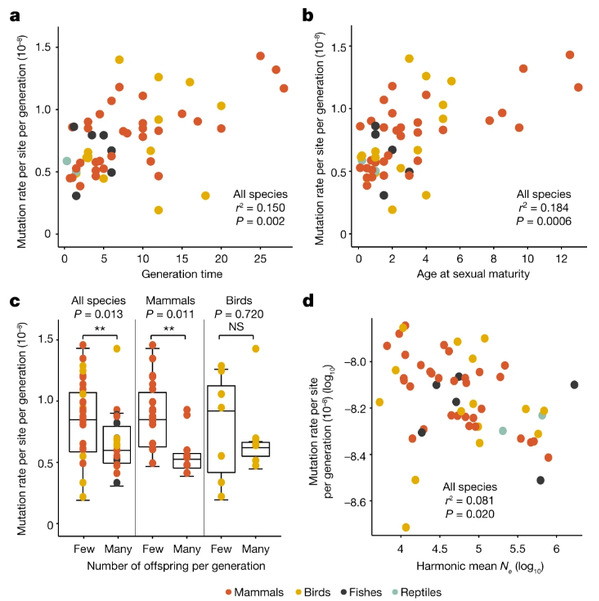"Reproductivity is a crucial factor for explaining the different germline mutation rates between species." The scientists from China, Denmark, France, Germany and USA discovered the underlying causes and evolutionary patterns of variations in terms of the germline mutation rate across species. Their groundbreaking findings were published in Nature on March 2.
As an ultimate source of genetic diversity and a major driver for evolution, DNA mutations are in the spotlight in evolutionary biology and biomedical research. The fundamental reason why offspring develops new traits different from their parents' lies in the fact that the offspring carries the DNA mutations occurred in germ cells from the parents. And the frequency of the DNA mutation occurred cross-generations is called per-generation mutation rate and has been found to be different between species. How this mutation rate varies among species? The question has been baffling biologists for over 80 years.
The researchers quantified germline mutation rates across vertebrates by sequencing and comparing the high-coverage genomes of 151 parent-offspring trios from 68 species of mammals, fishes, birds and reptiles. "The per-generation mutation rate varies among species by a factor of 40, with mutation rates higher for reptiles and birds than for mammals and birds," Dr. Lucie Bergeron, the lead author of the study from the University of Copenhagen, observed. "Given the substantial differences in life-history trait across species, a factor of 40 is not a yawning gap. This suggests that there are resemblances among vertebrates when it comes to the mechanisms underlying mutagenesis."

Fig. 1: Variation in GMRs across 68 vertebrate species.
According to the 'male-driven evolution hypothesis', in mammals and birds, the much larger number of germ cell divisions per generation in the male germ line leads to the expectation of a male mutation rate bias. "In other words, offspring's mutations occur primarily from genomic mutations in parents, but very little is known about the male-to-female contribution ratio," said Prof. ZHANG Guojie, the corresponding author of the study from Centre for Evolutionary & Organismal Biology at Zhejiang University. "Around 48% of all 3,034 de novo mutations (DNMs) could be traced for their parental origin. Our research indicated that approximately 75% of DNMs in bird offspring derive from mutations in paternal germ cells whereas the proportion is roughly 67% in mammals. In contrast, in fish and reptiles, which show a low level of sexual dimorphism, both sexes make literally equal contributions to DNMs."
Moreover, the researchers also found that the earlier a species matures sexually, or the more offspring per generation produces, the lower the per-generation mutation rate will be in germ cells. In addition, they demonstrated that genetic drift also had an impact on the germline mutation rate and found a negative association between the per-generation mutation rate and the effective population size.

Fig. 2: Predictors of interspecific variation in GMRs.
Germline mutations are the engine of species evolution, and the mutation rate affects the evolutionary potential of each species and the evolution of new traits in them. "Our study indicates that the mutation rate, like other biological traits, varies from species to species, and that it is also influenced by other biological traits during the macroevolutionary process," ZHANG Guojie stressed.






